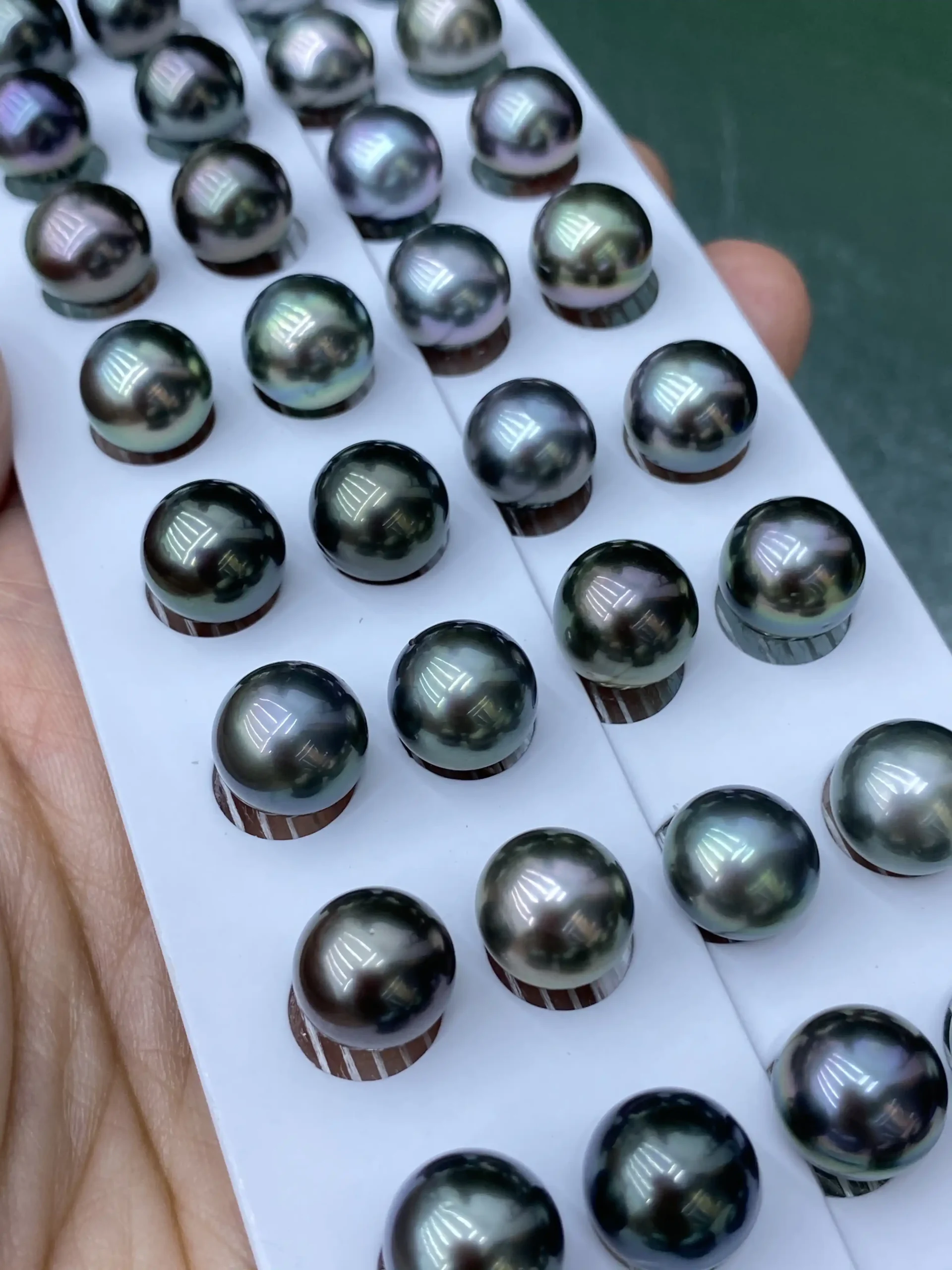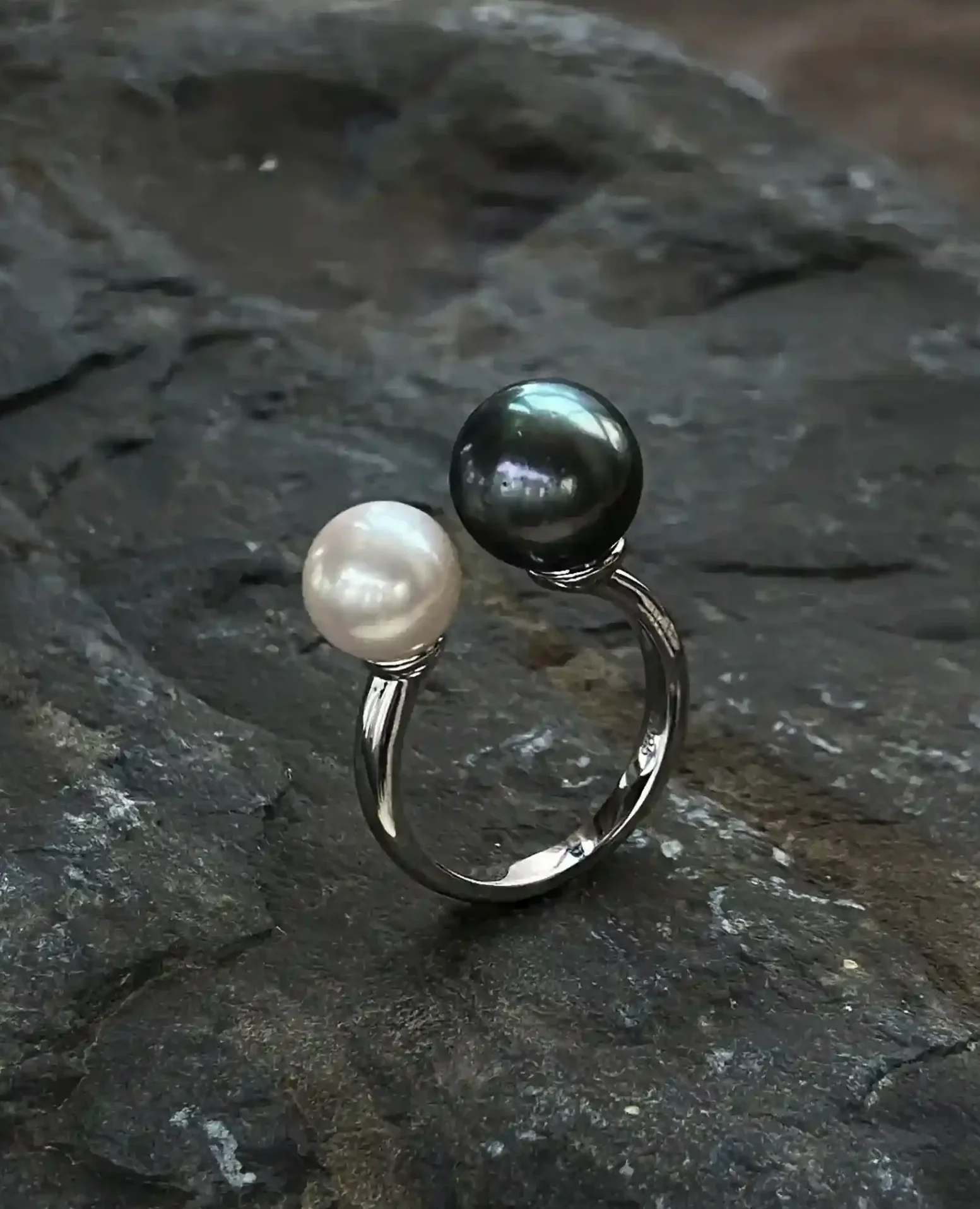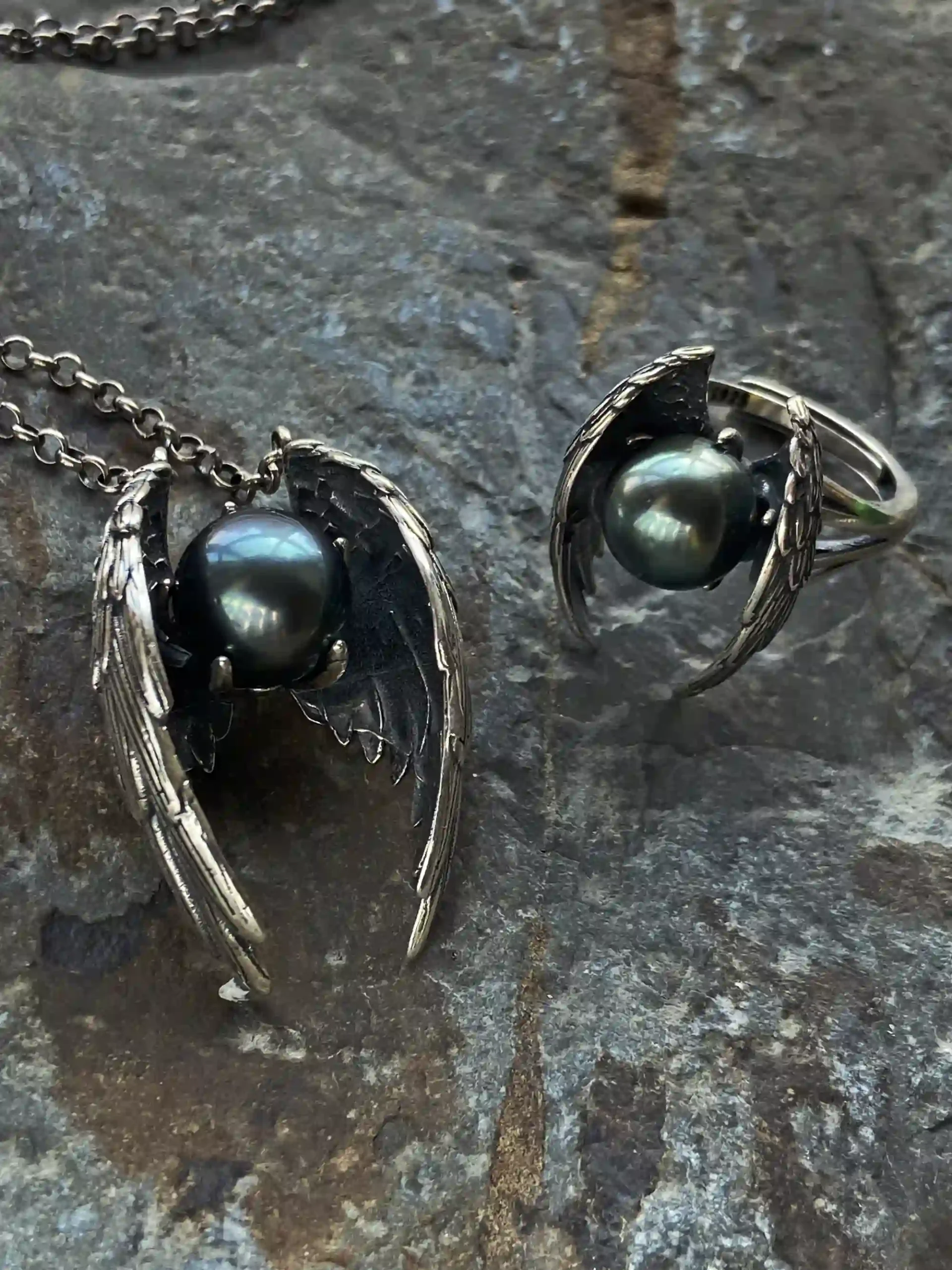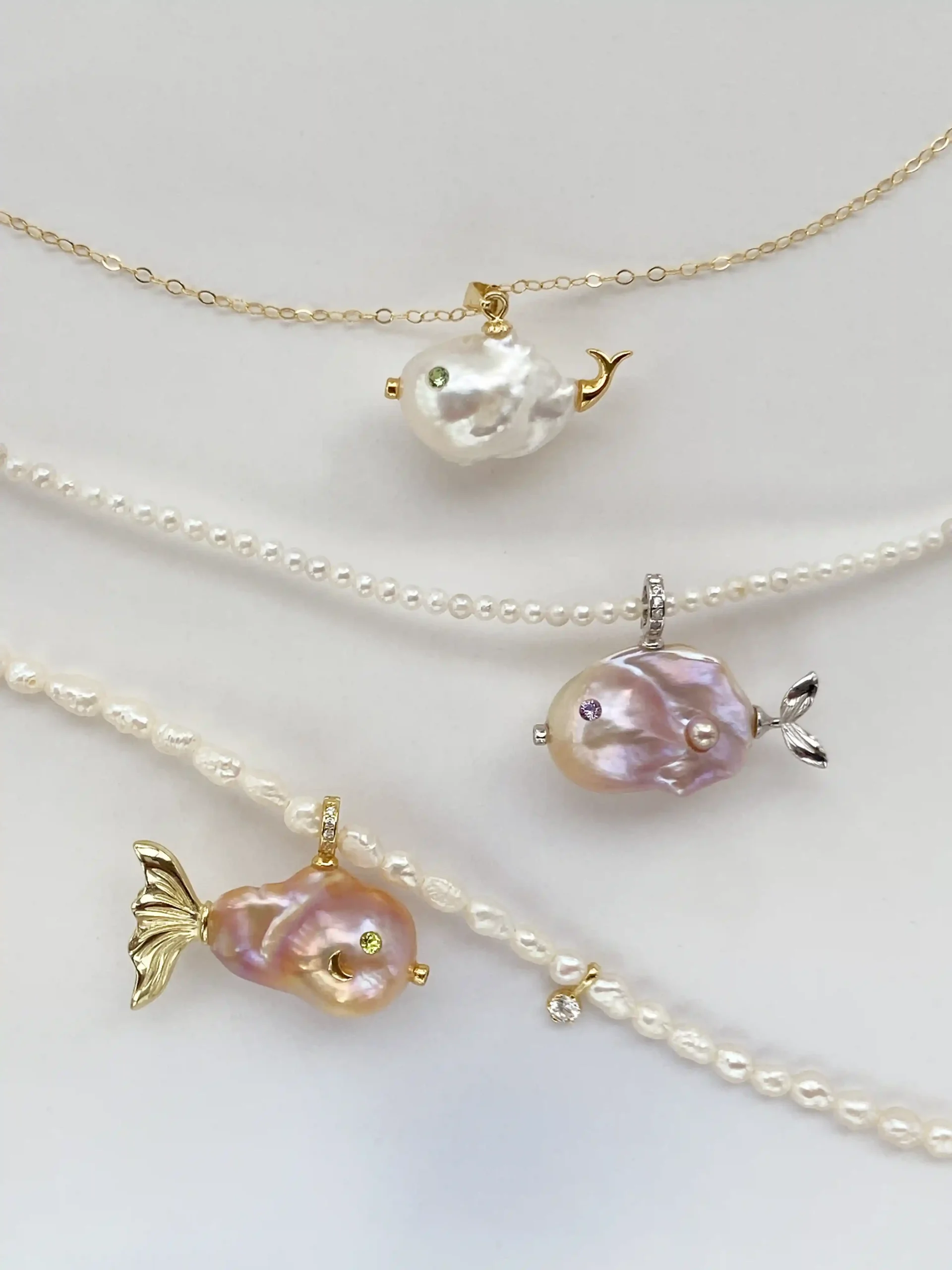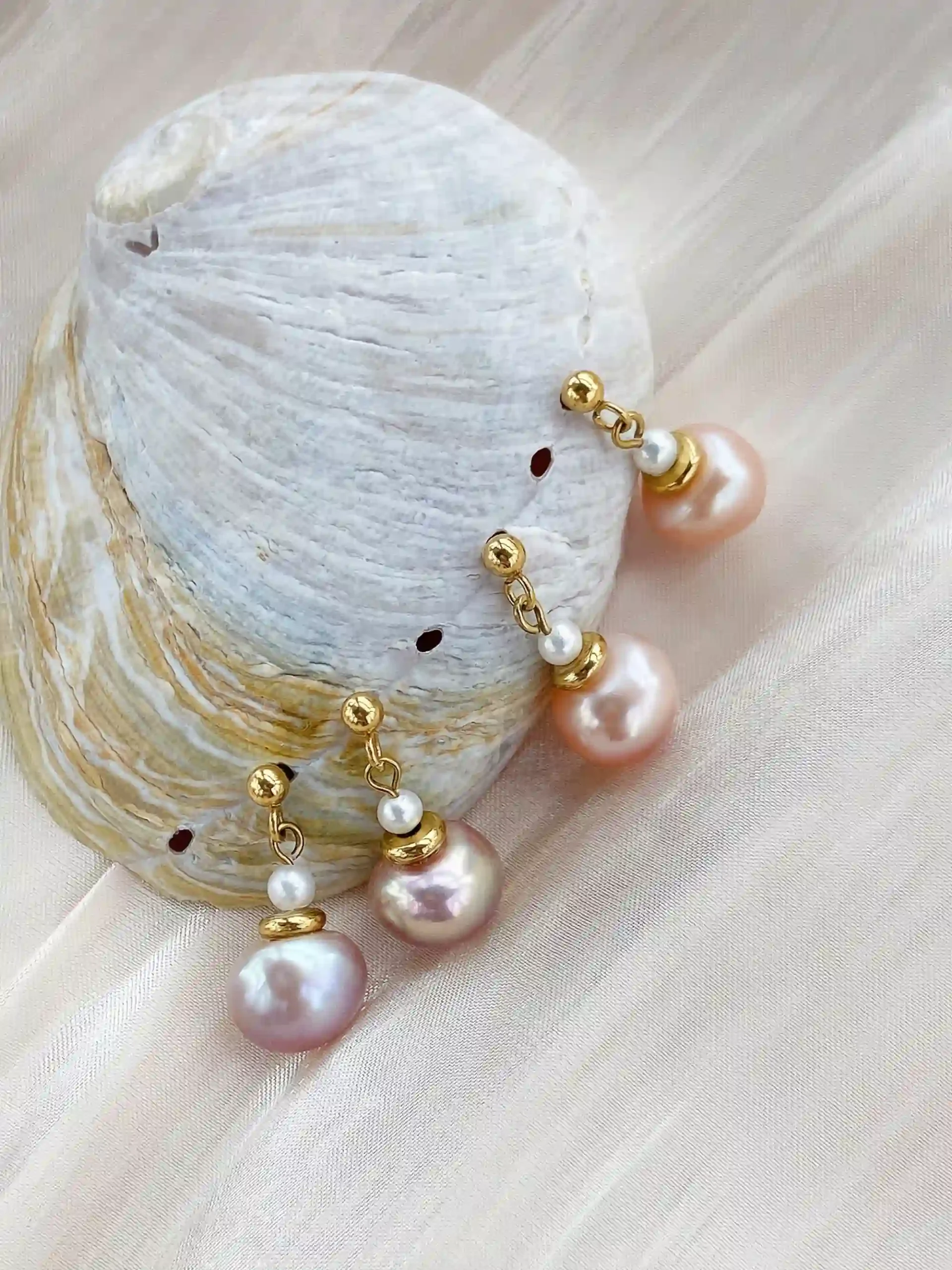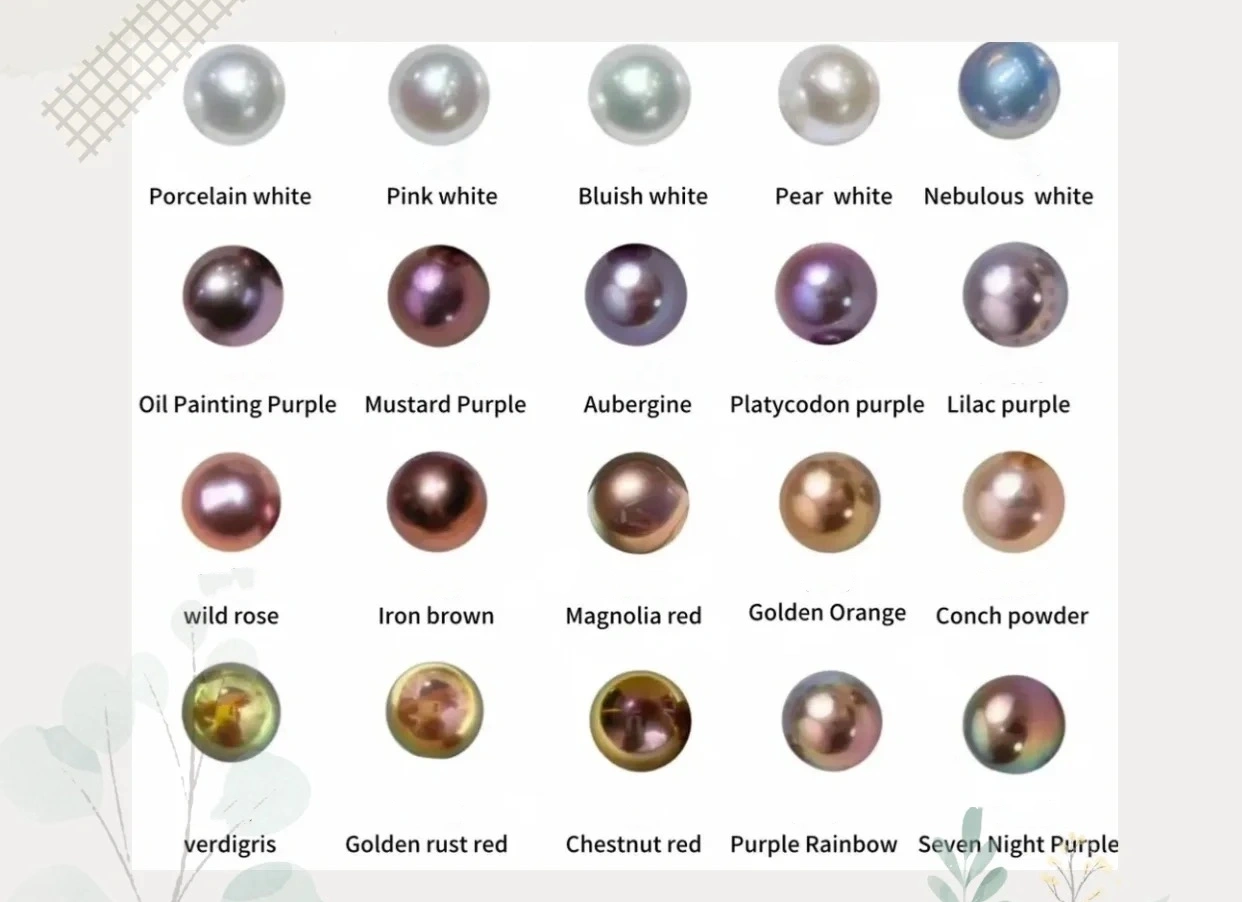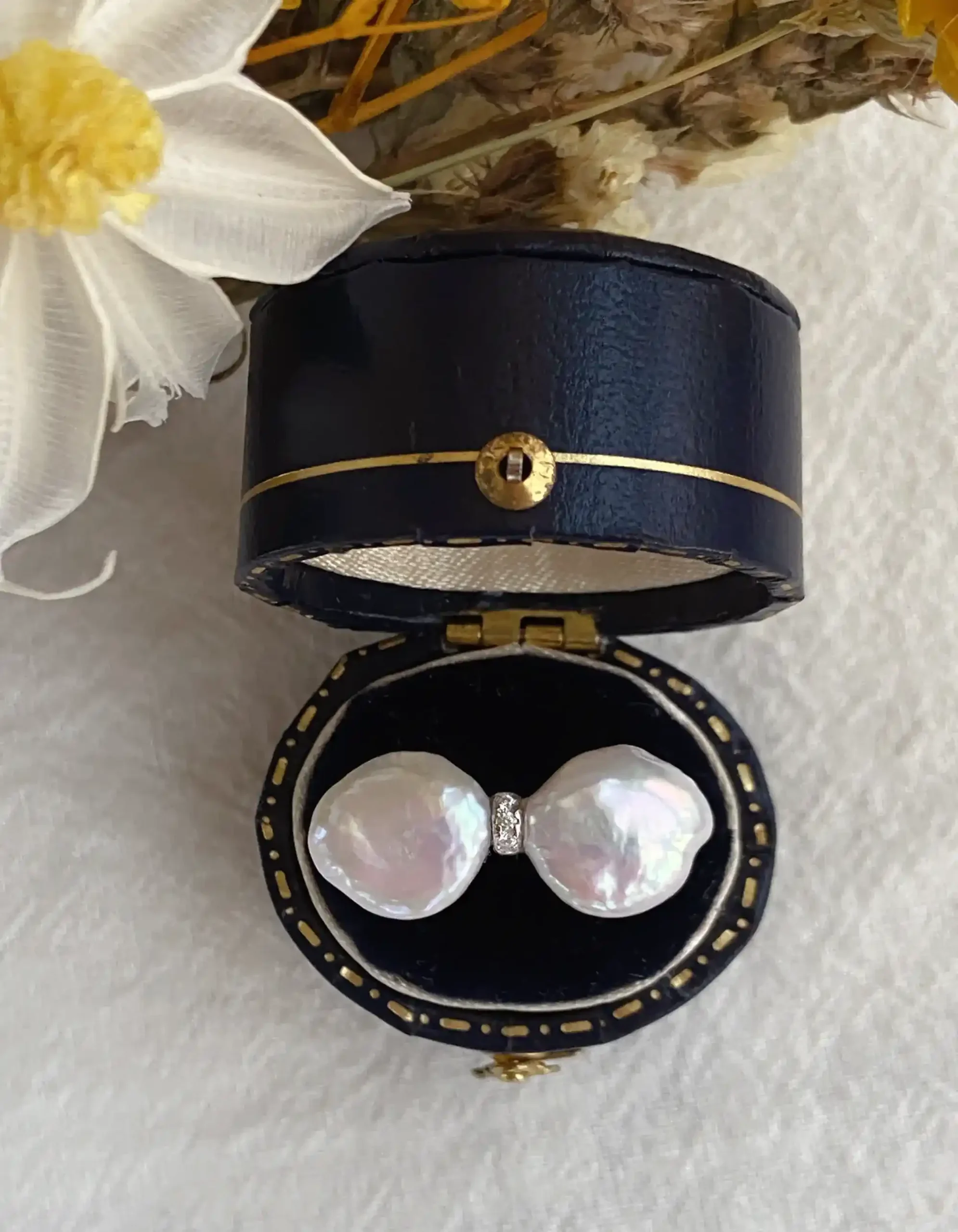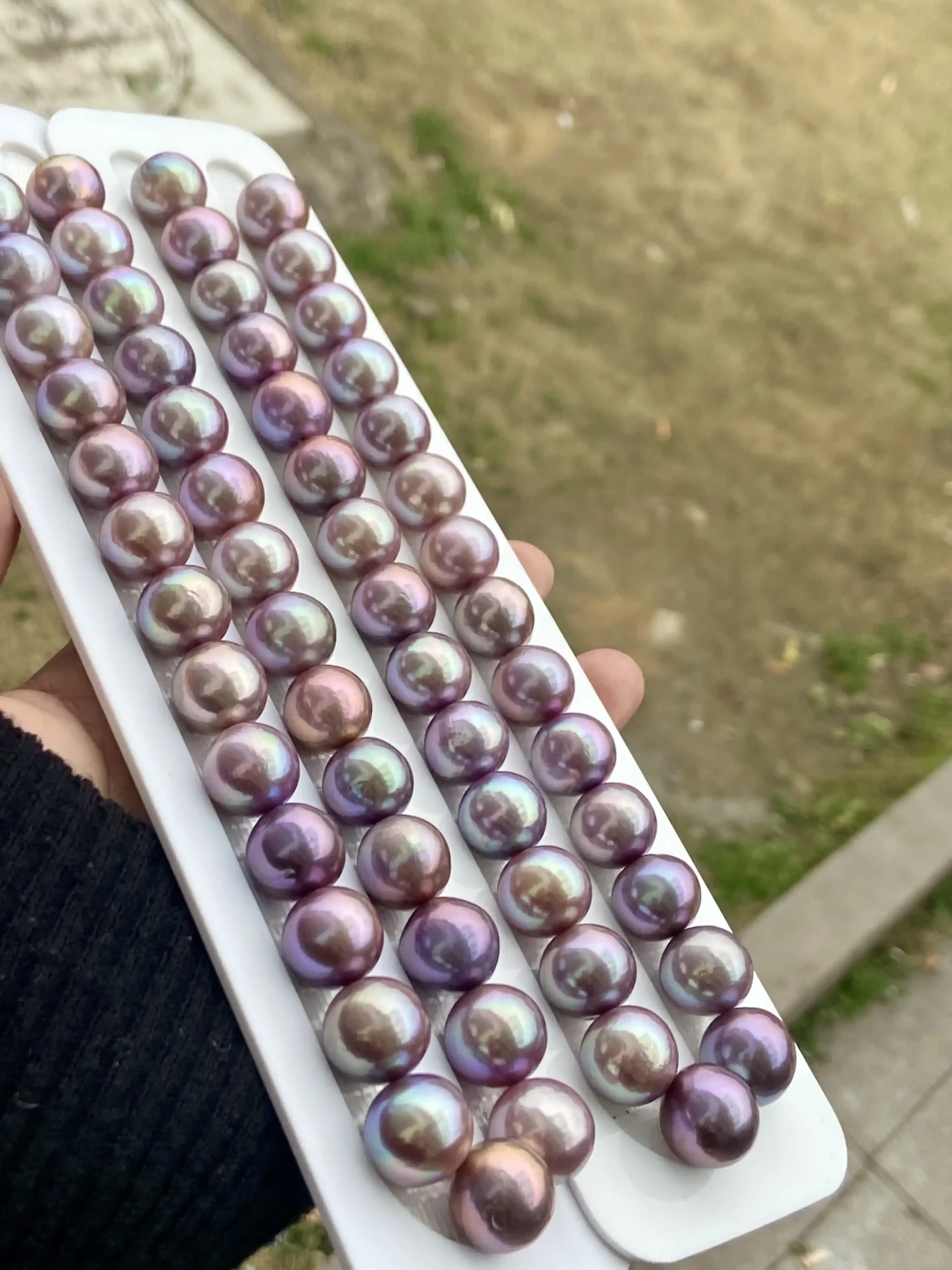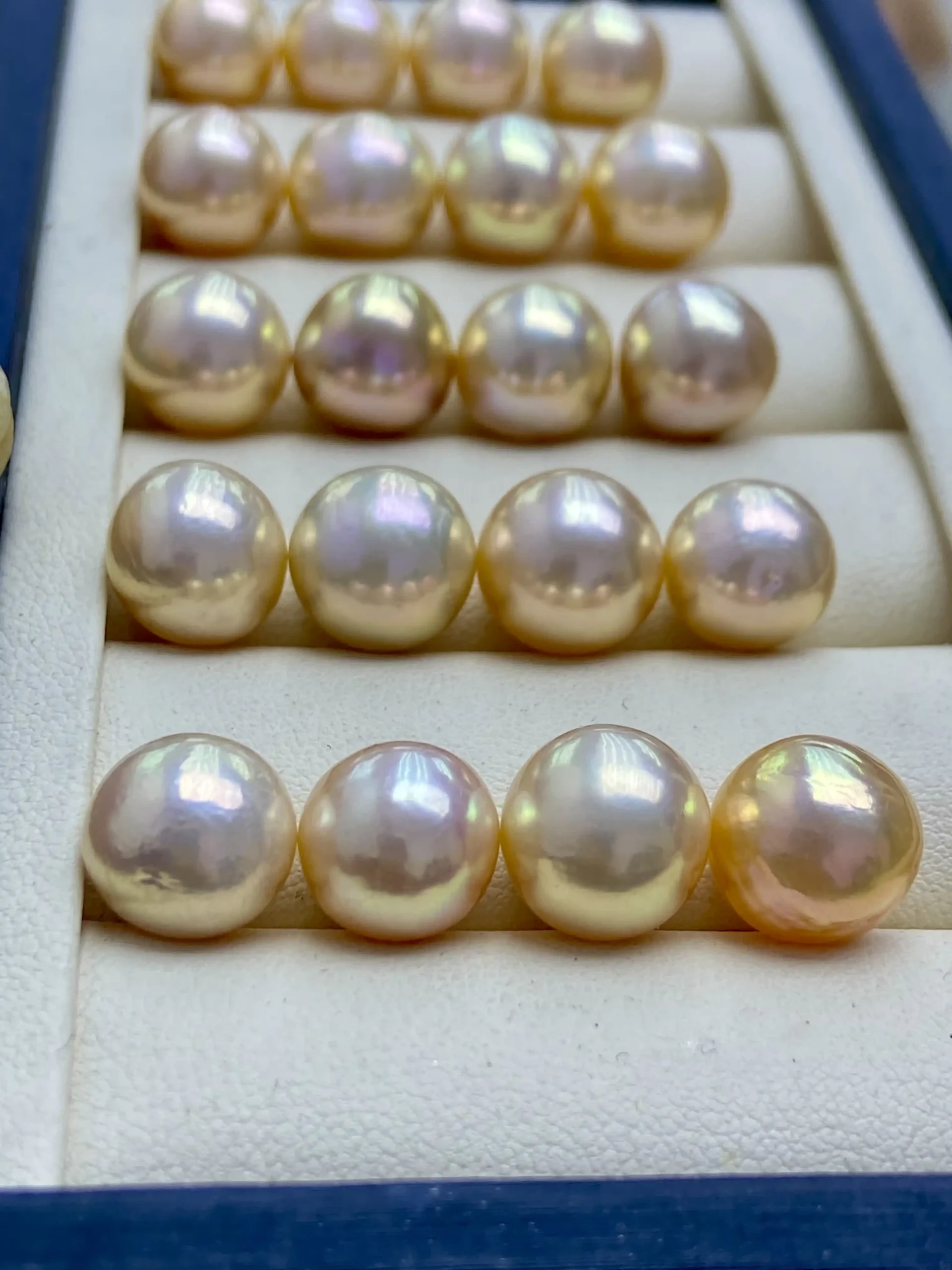Saltwater vs Freshwater Pearls & the Rise of Edison Pearl
Discover the key differences between saltwater vs freshwater pearls, including color& shape, nacre thickness& luster, price& value. Learn why the Edison pearl is a standout achievement among cultured freshwater pearls.
Today’s cultured pearls are divided into saltwater and freshwater categories.
Saltwater Pearls
Tahitian Pearls: Produced by the black-lipped oyster in French Polynesia, they range from 8–18mm and show peacock green, eggplant purple, and bronze iridescence. Each oyster may produce multiple pearls, and prices have become more accessible.
South Sea Pearls: Grown in the Philippines and Australia (8–20mm), these luxurious pearls come in:
- White (silver-lipped oysters): Creamy to cool white, with rosy overtones being most valuable.
- Golden (gold-lipped oysters): Champagne to deep 24K gold tones with bronze/green overtones.
Cultivation can take up to 3 years, producing round, teardrop, and baroque shapes.
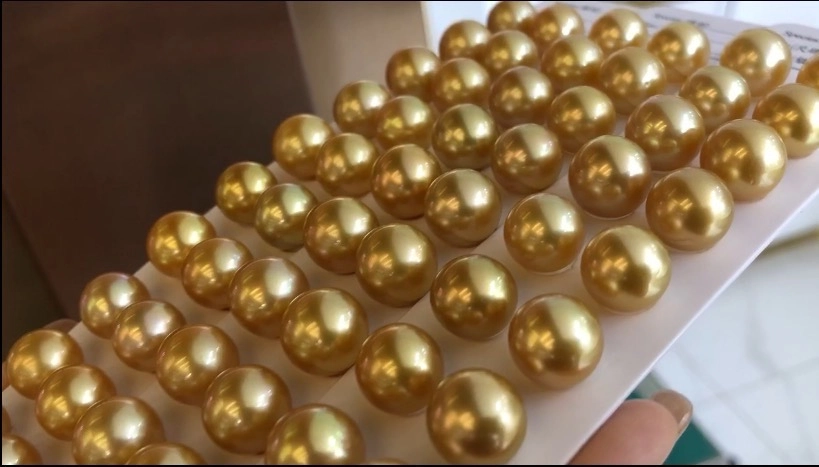
Akoya Pearls: The most classic pearl type, known for perfect roundness and mirror-like luster (2–10mm). Harvested from small Pinctada fucata martensii oysters, Akoya pearls are prized for their sharp “lightbulb shine” and subtle overtones like rose pink and silver white.
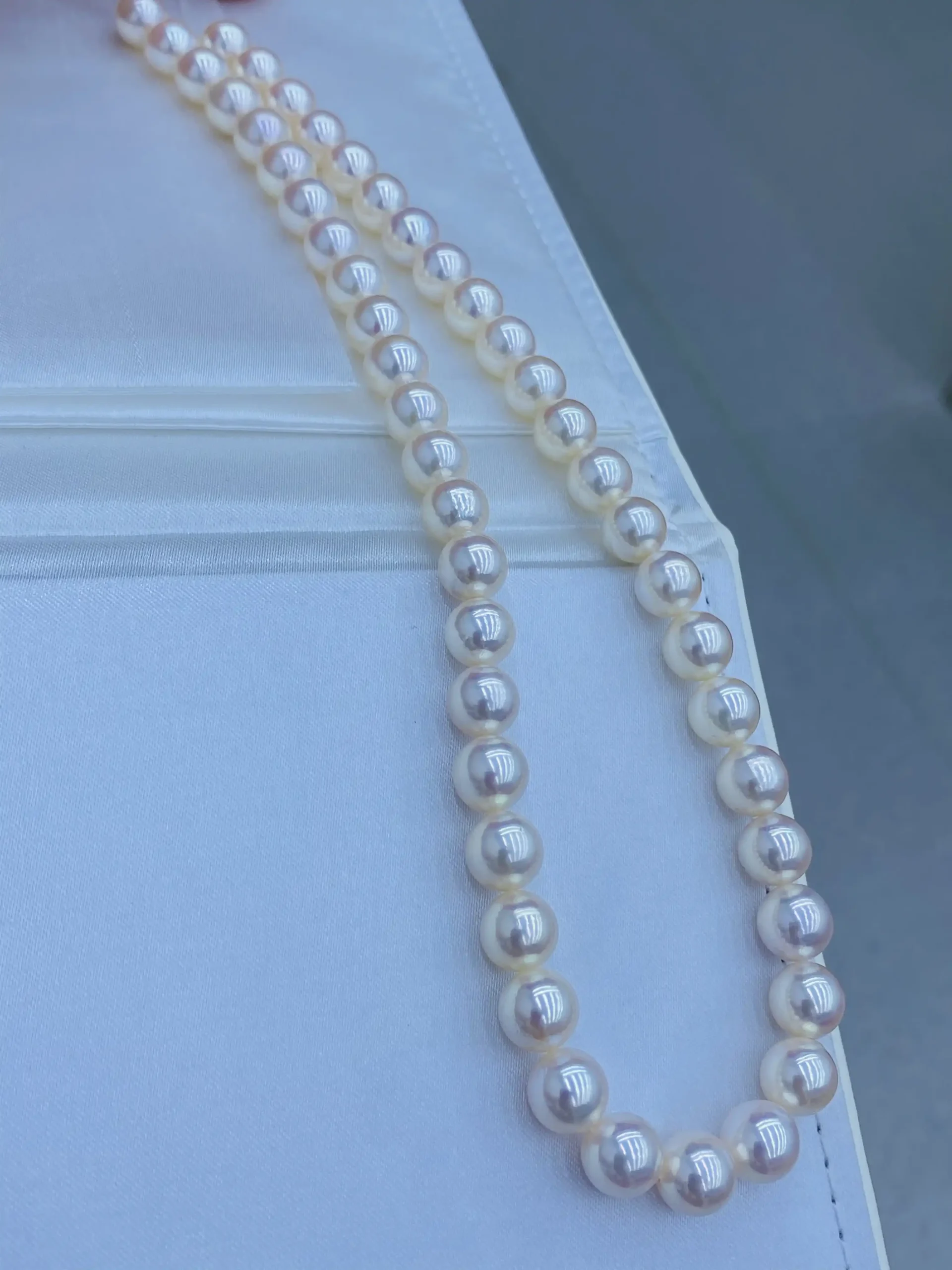
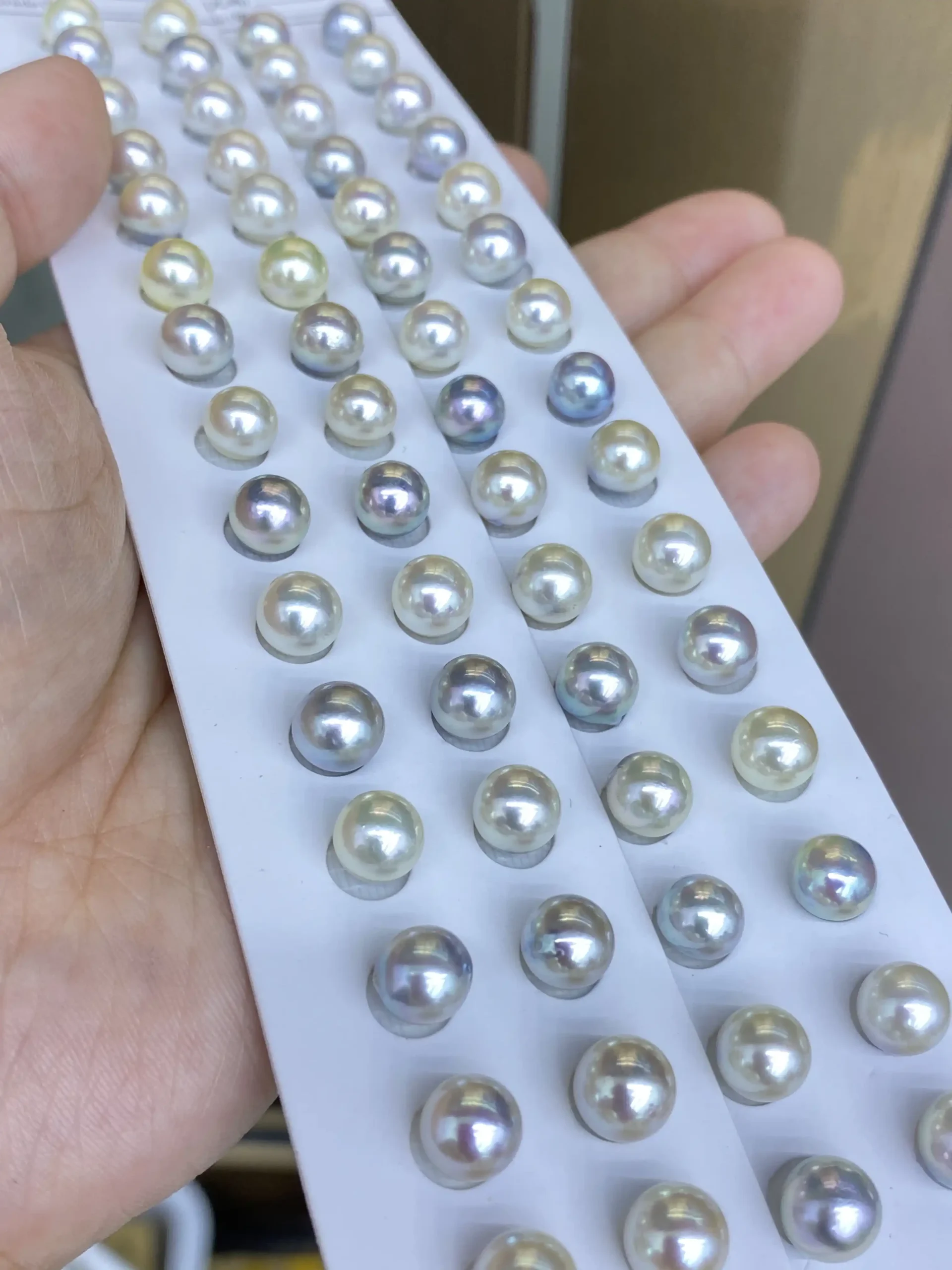
Freshwater Pearls
Primarily cultivated in China using triangle mussels (Hyriopsis cumingii), freshwater pearls dominate the market thanks to their affordability and variety. Sizes range from 5–20mm with shapes from rice and button to round, fireball, and star baroques.
Discover our One of A Kind Jewelry Collections- freeform designs- there’s truly only one of each
Unique advantages:
- One mussel can yield up to 24 pearls per harvest.
- Natural color range includes white, pink, light gold, lavender, silvery-gray, and metallic tones. GUILD, one of the world’s most respected authorities in gem identification and jewelry grading, offers an official naming system for these colors. Names like Aurora, Stardust Purple, Sunrise, and Silver Blush capture the dreamy, romantic tones of natural pearls. Explore the GUILD freshwater pearl colors description.
-

Note: Be cautious of dyed freshwater pearls sold as Tahitian—natural Tahitians have layered iridescence, unlike the flat tone of dyed ones.
-
Saltwater pearls are generally bead nucleated, while freshwater pearls can be:
- Bead nucleated: Seen in large varieties like Edison Pearl.
- Tissue nucleated (Non-nucleated): Inserting tiny mantle slices leads to 100% nacre composition, offering natural durability and luster. Tissue nucleated pearls examples:
Edison Pearl: A Technological Leap
Edison pearls represent China’s breakthrough in bead-nucleated freshwater pearl farming. Developed after 1,000+ experiments and ¥100M+ in R&D, Edison pearls fill the market gap for large, truly-round pearls (11–20mm), with nacre thickness reaching 5–12mm—well above global standards.
Cultivated over 3-5 years, Edison pearls come in white, light golden, deep purple, violet, and bronze. Their metallic iridescence can rival top-grade Tahitian pearls, but at just 1/3 to 1/6 of the cost. A true tribute to Edison’s lament—“There are only two things I could never create in the lab—diamonds and pearls”—this high-tech pearl honors his legacy with Chinese ingenuity.
Saltwater vs Freshwater Pearls: Value and Market
Traditionally, freshwater pearls were considered lower in value. For example, round 8mm gem-grade freshwater pearls may cost $300–600, while similar Akoya pearls range from $1,000–2,000 or more—especially certified Hanadama-grade. However, with improved techniques, top-tier freshwater pearls now rival saltwater varieties in appearance. See the gem-grade freshwater pearls below:
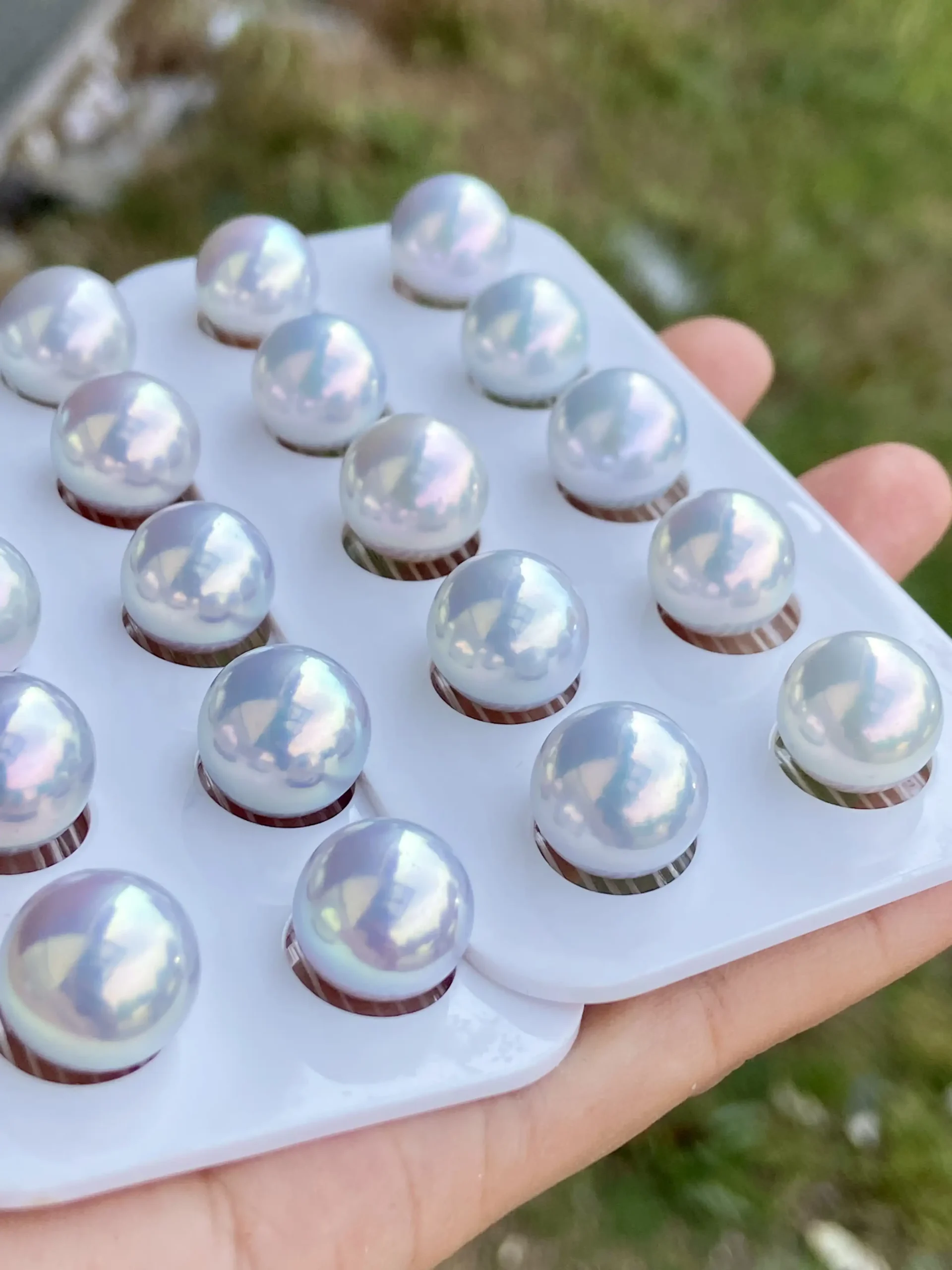

Though saltwater pearls remains rarer and pricier due to cultivation challenges, the gap is closing.
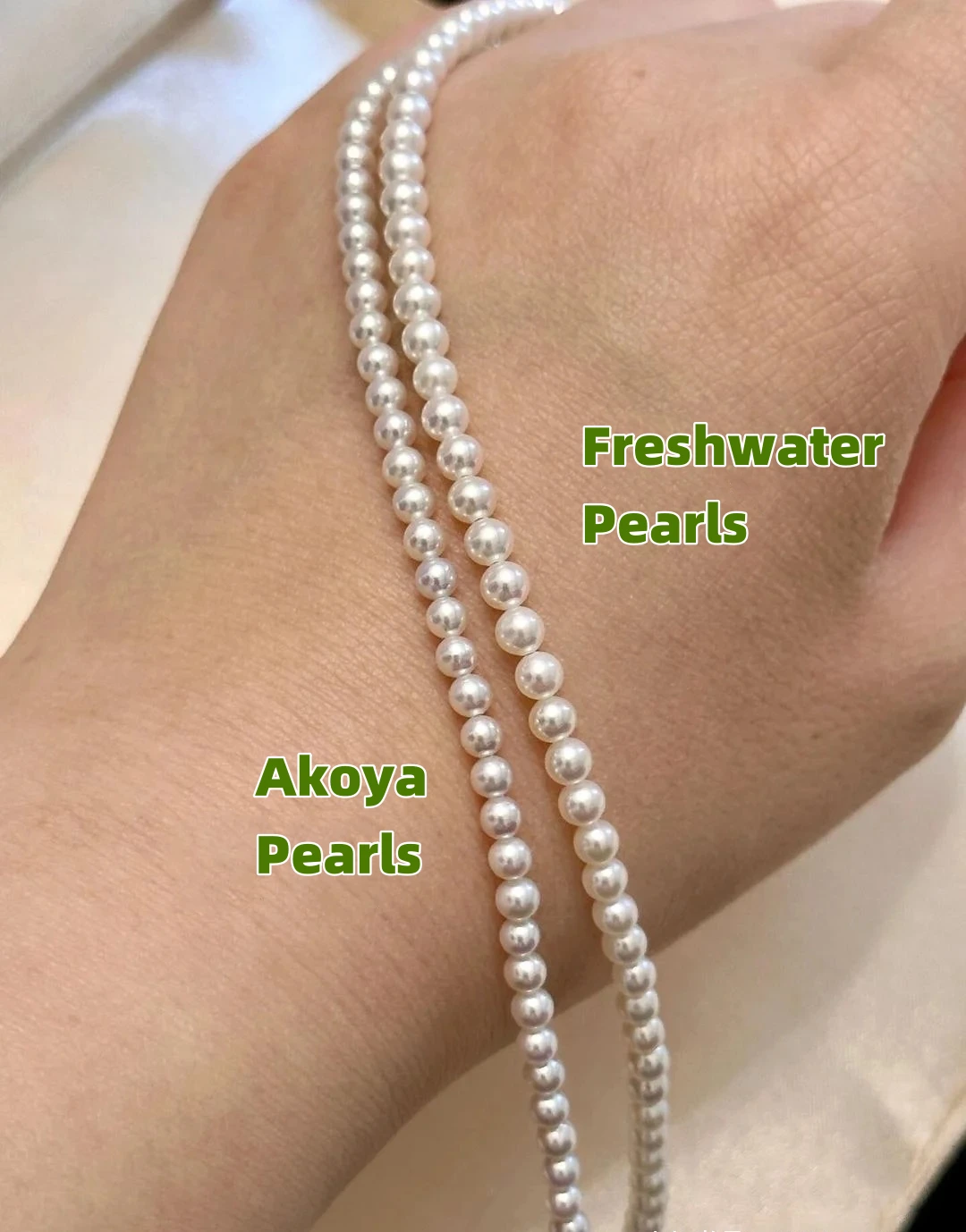
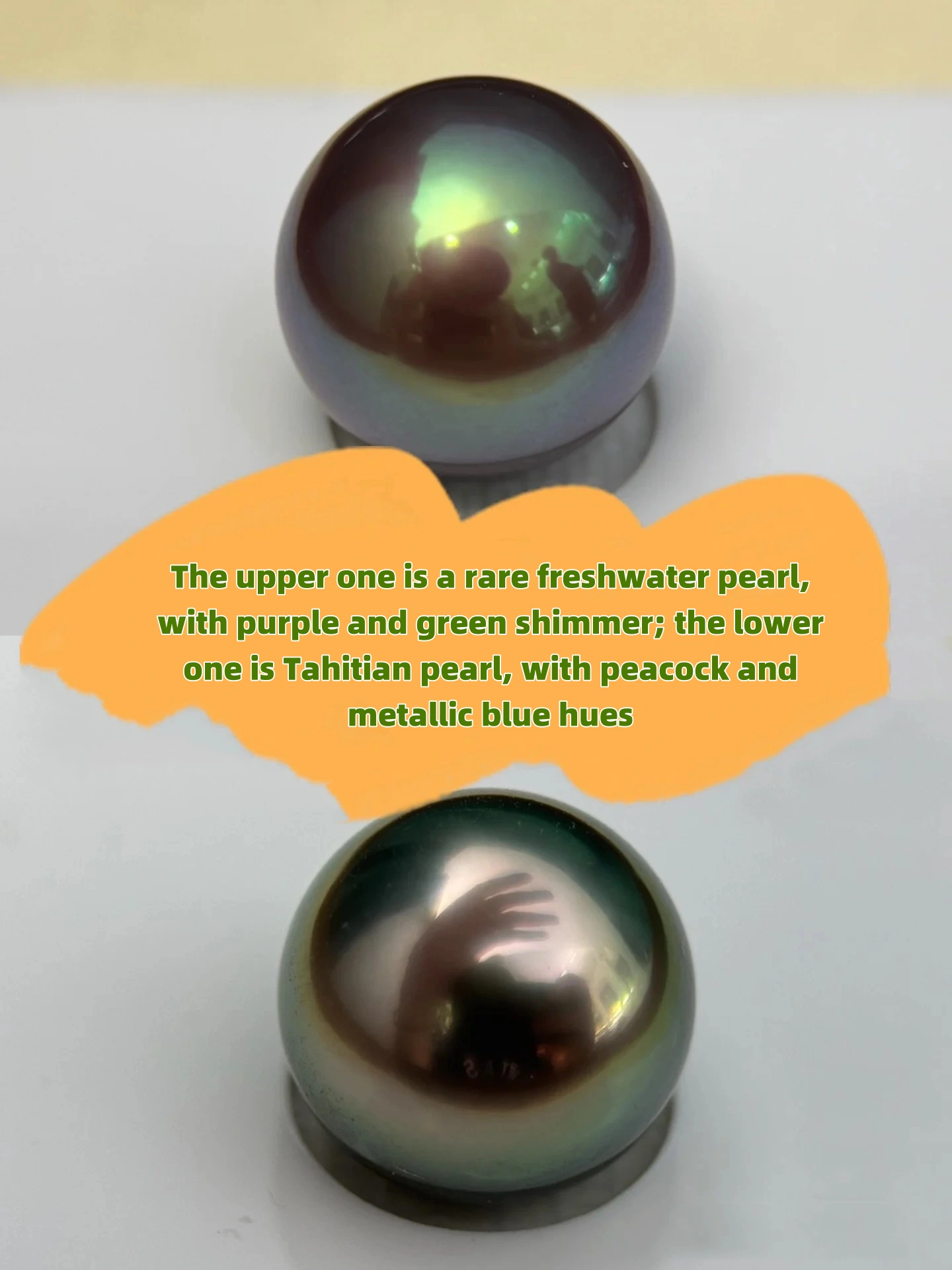
Nacre and Luster
When comparing saltwater vs freshwater pearls, understanding nacre thickness and luster longevity is essential. Akoya pearls, prized for their mirror-like shine and roundness, often have nacre just 0.3mm–0.6mm thick. Though their compact nacre gives them durability for their thickness, this is still among the thinnest, making them prone to losing luster within a few years—even with care. In contrast, freshwater pearls are either 100% nacre (non-nucleated) or have thicker nacre if nucleated. Tahitian pearls also offer thick nacre above 0.8mm.
See the nacre comparison video: Akoya pearl vs freshwater pearl
And this is an example of an Akoya pearl after several years of wearing:
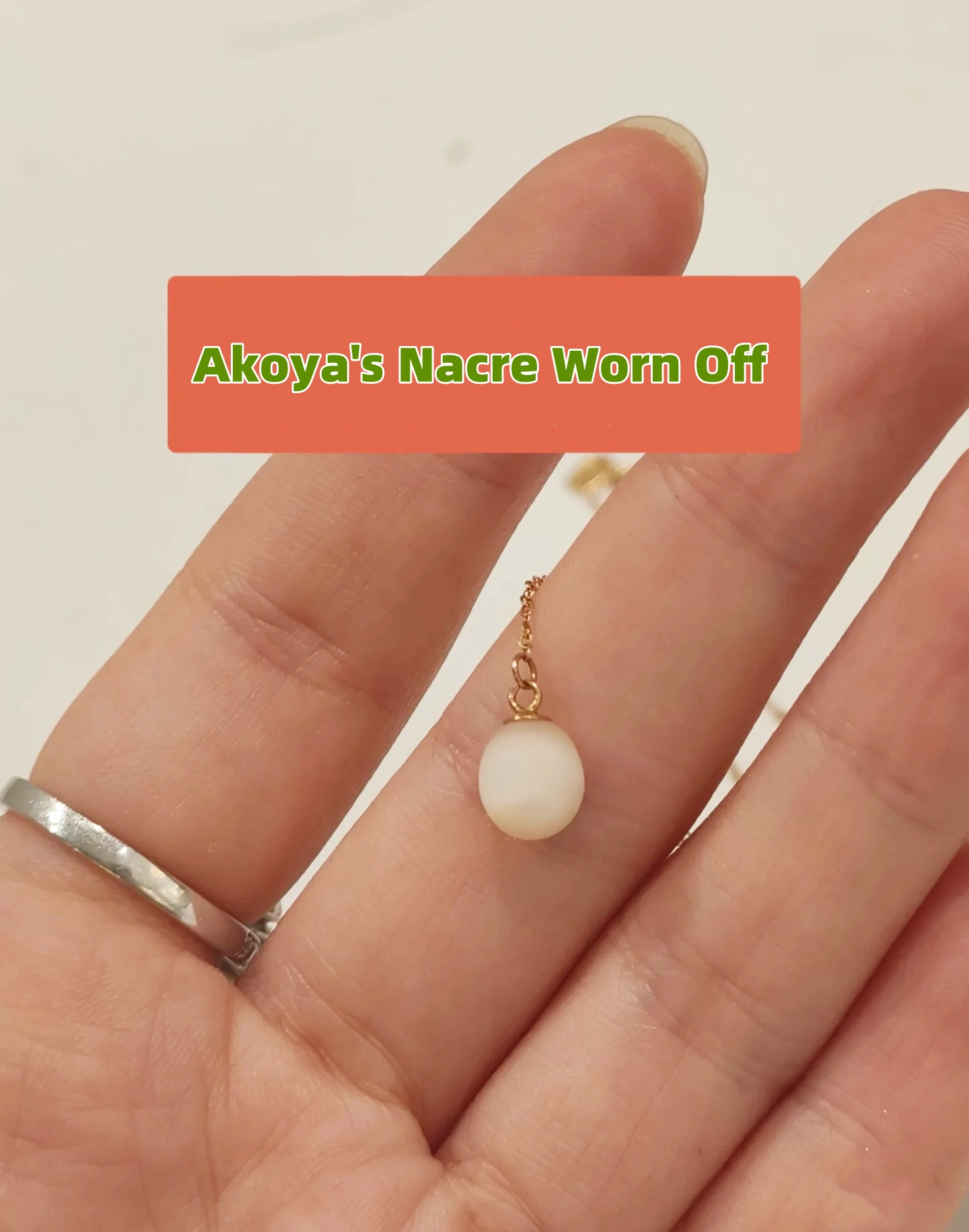
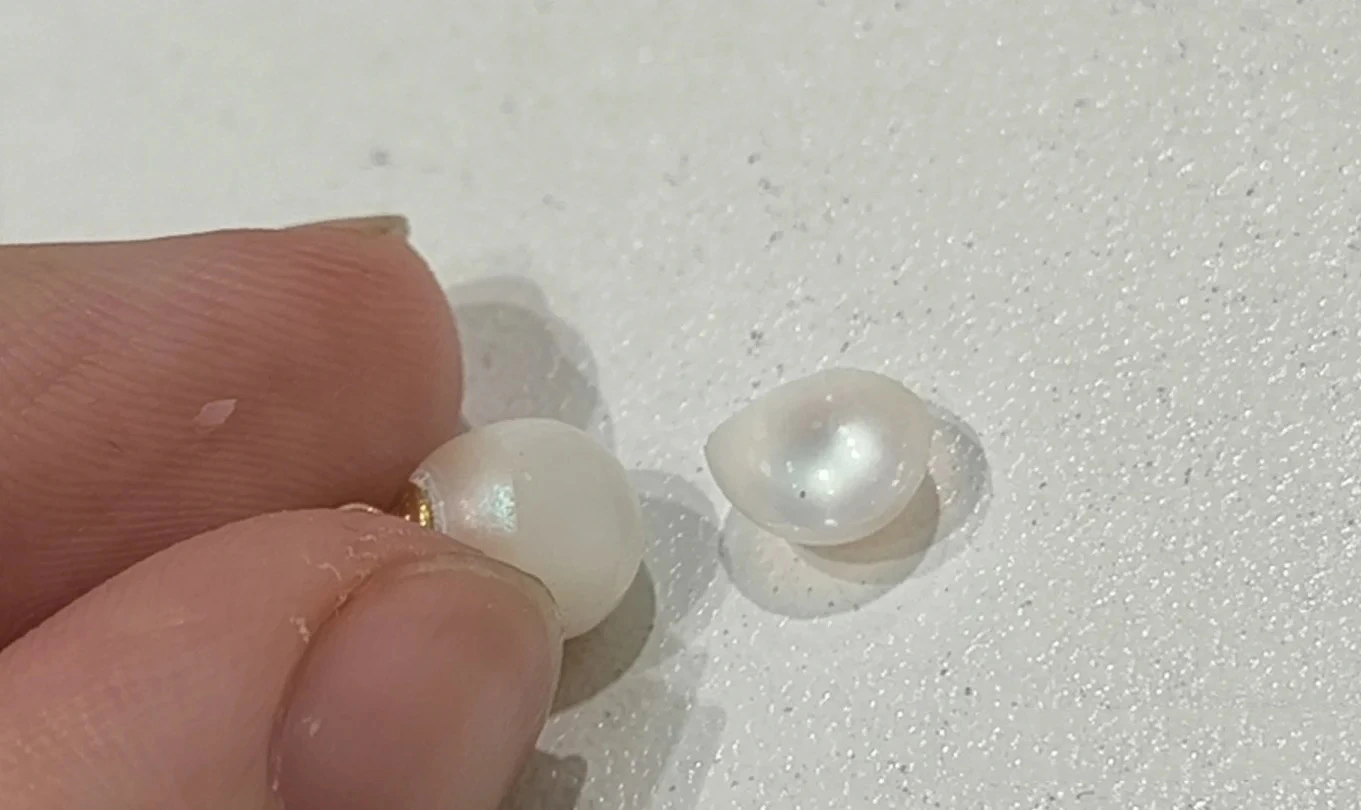
Saltwater Pearls or Freshwater Pearls? Balancing Beauty and Budget
The perfect pearl requires balancing type, budget, and aesthetics:
- Saltwater pearls symbolize classic luxury. If you’re after a Mikimoto-style strand, consider high-grade Akoya pearls like Hanadama.
- Freshwater pearls are affordable and practical for everyday wear. Their lower price lets you explore various pearl beauties without sacrificing quality.
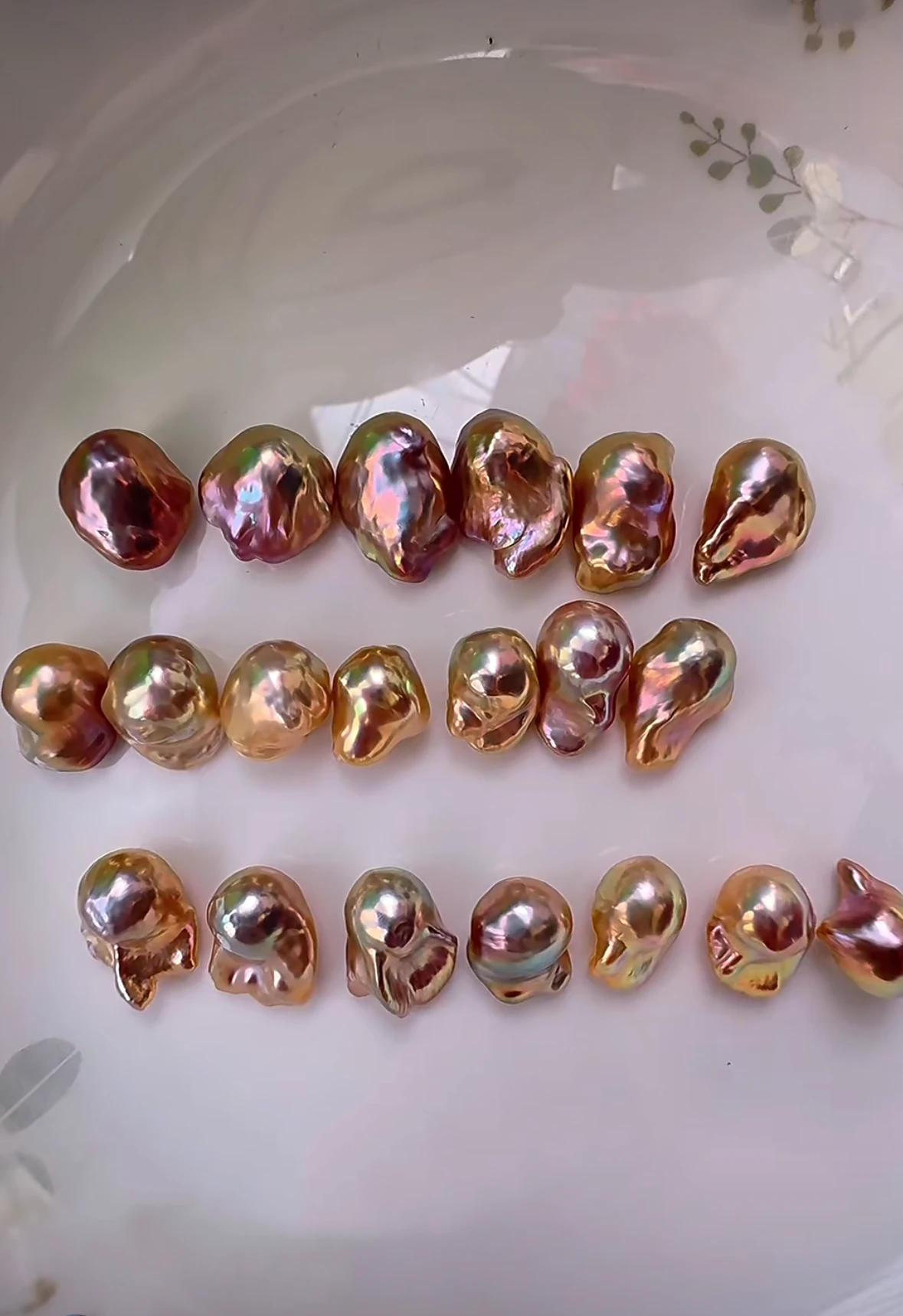
As discussed in my Jewelry 101 blog, buying close to the source offers greater value and reduces depreciation—true for both pearls and gemstones.
Why My Location Matters
Living in Shanghai gives me direct access to Zhuji Pearl Town, just two hours away. It’s the world’s largest pearl cultivation and trading hub, especially for freshwater pearls, but also features a strong saltwater pearl market. China’s pearl supply chain is the most complete in the world, which contributes ~95% of all pearls globally.
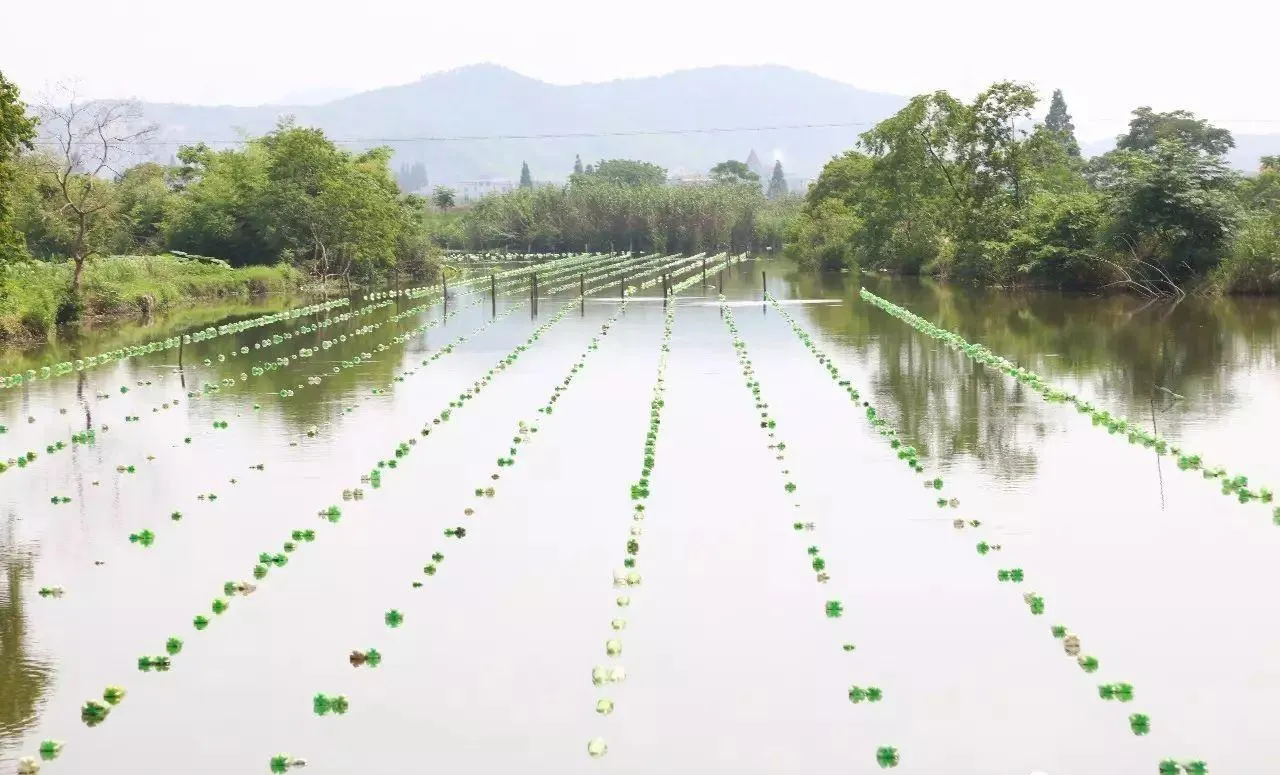
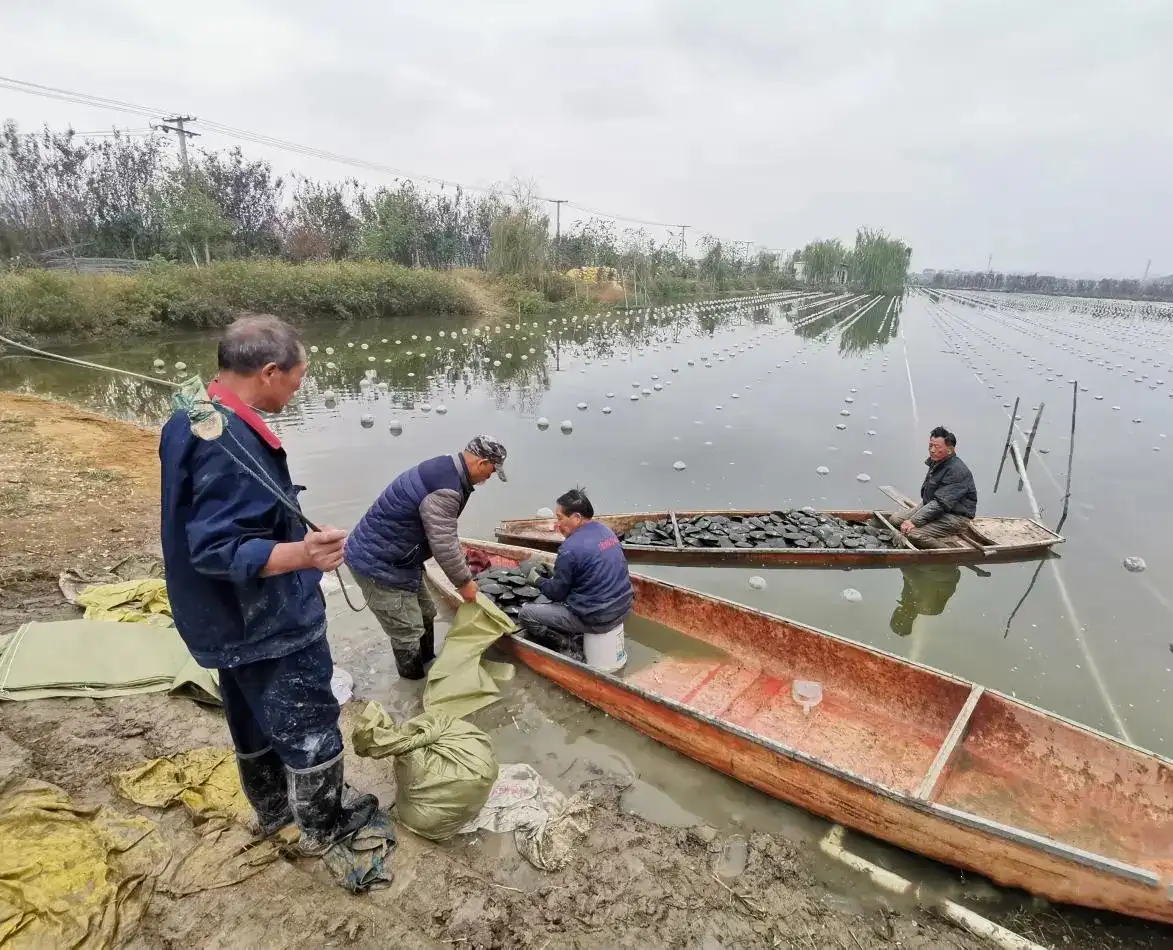
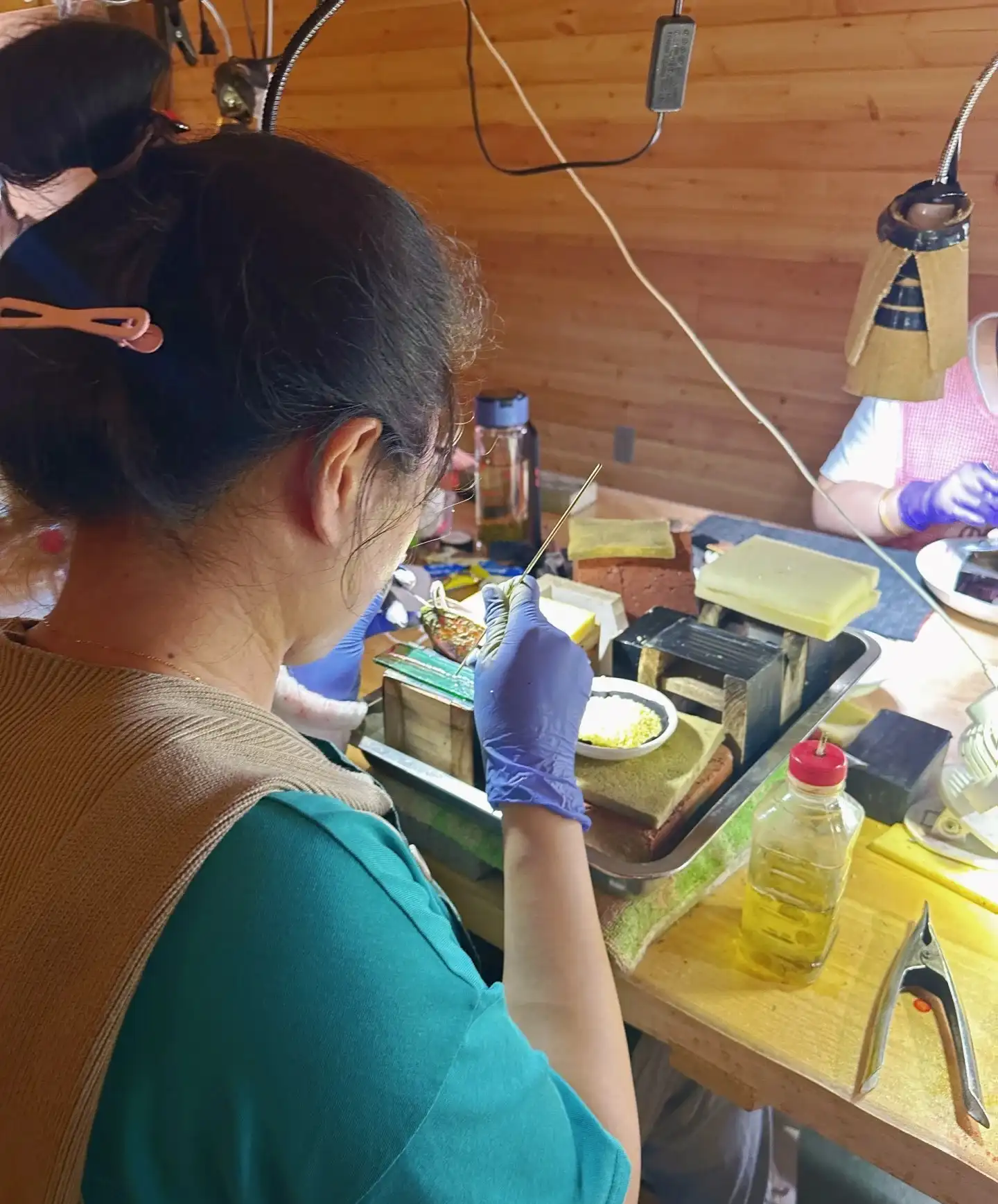
Here, I can see with my own eyes pearls of various grades, colors, and shapes—including many newly cultivated rare varieties—and personally handpick them to ensure that each pearl has the best possible luster and orient at its price point. This is the very soul of a pearl.
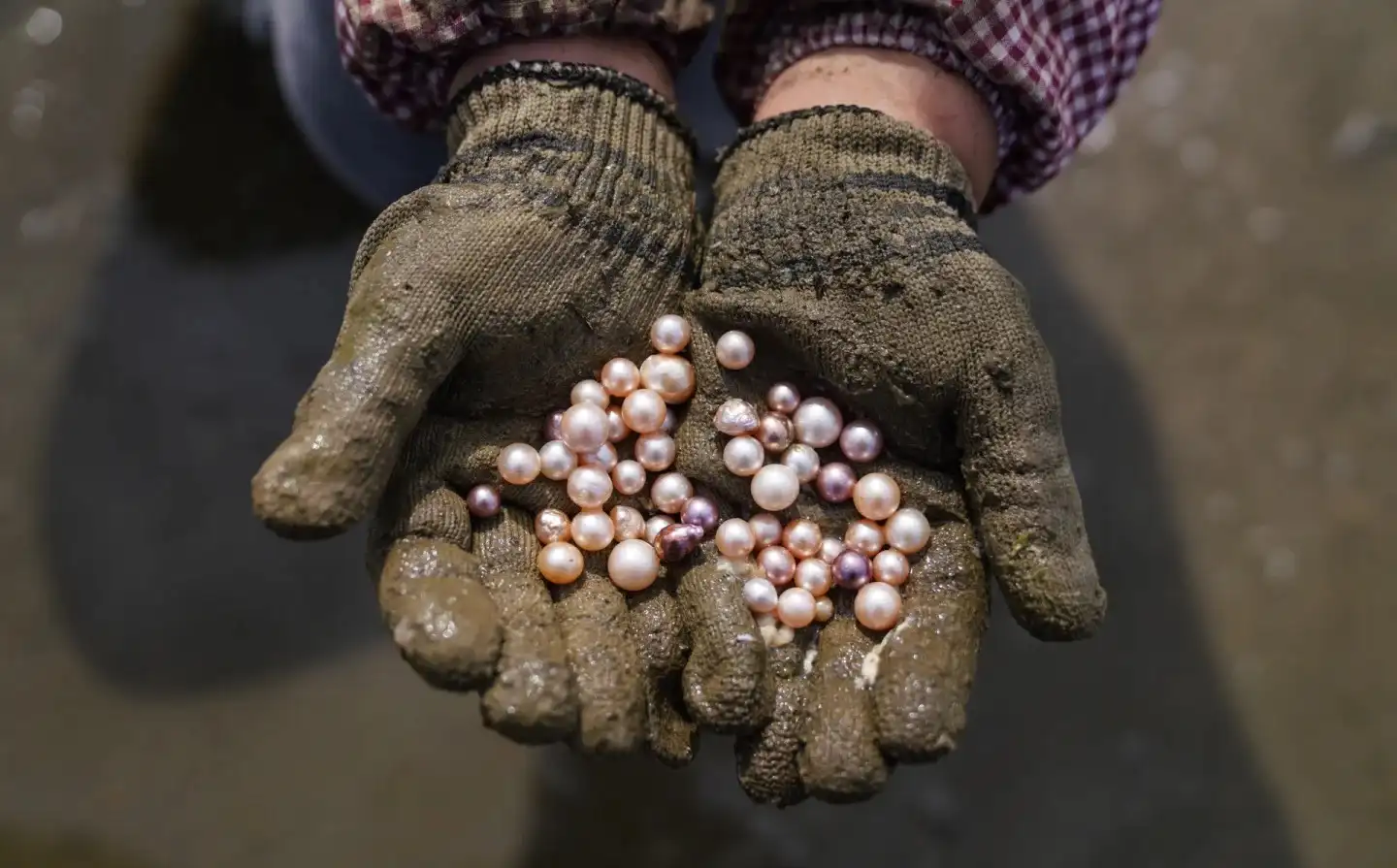
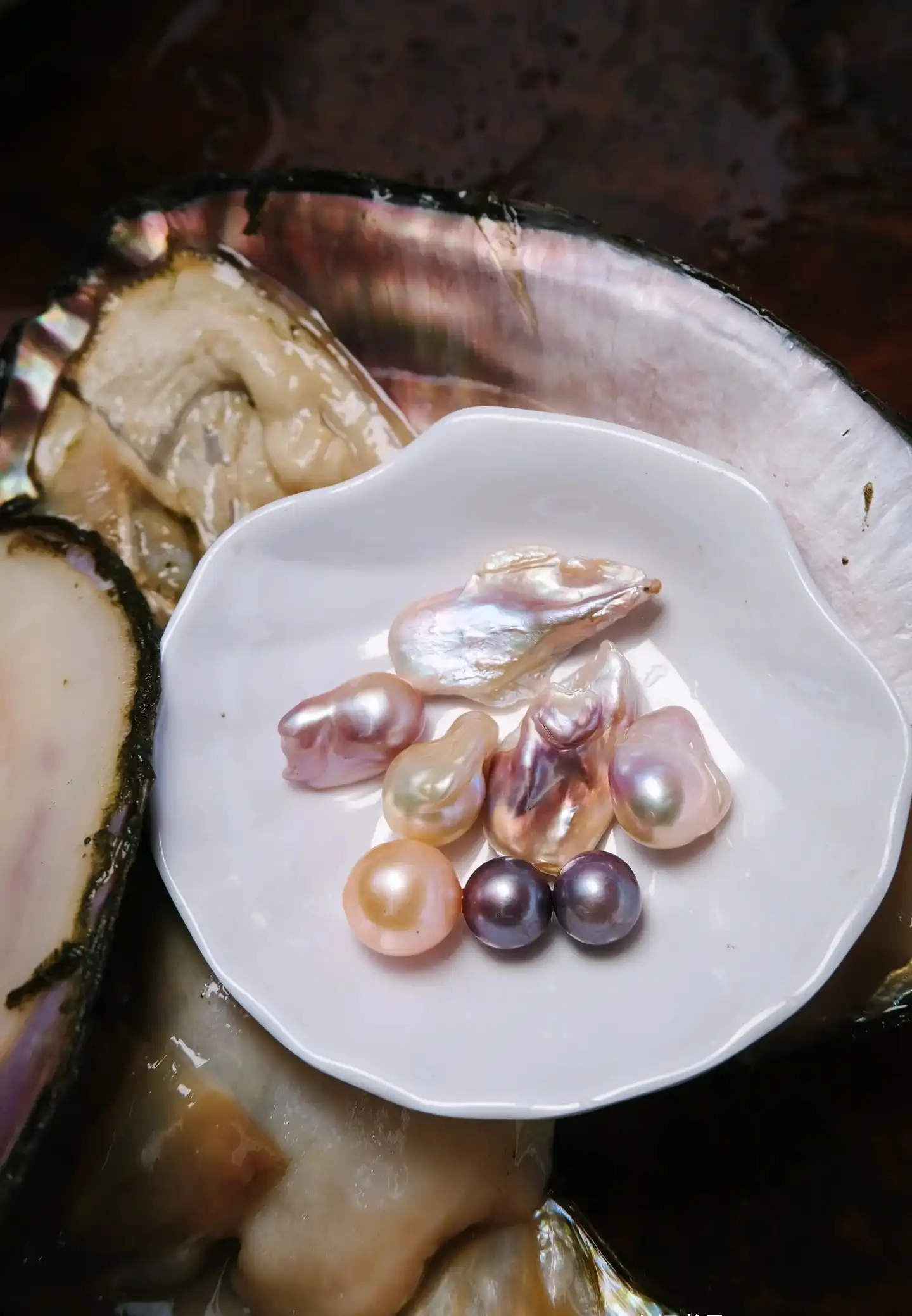
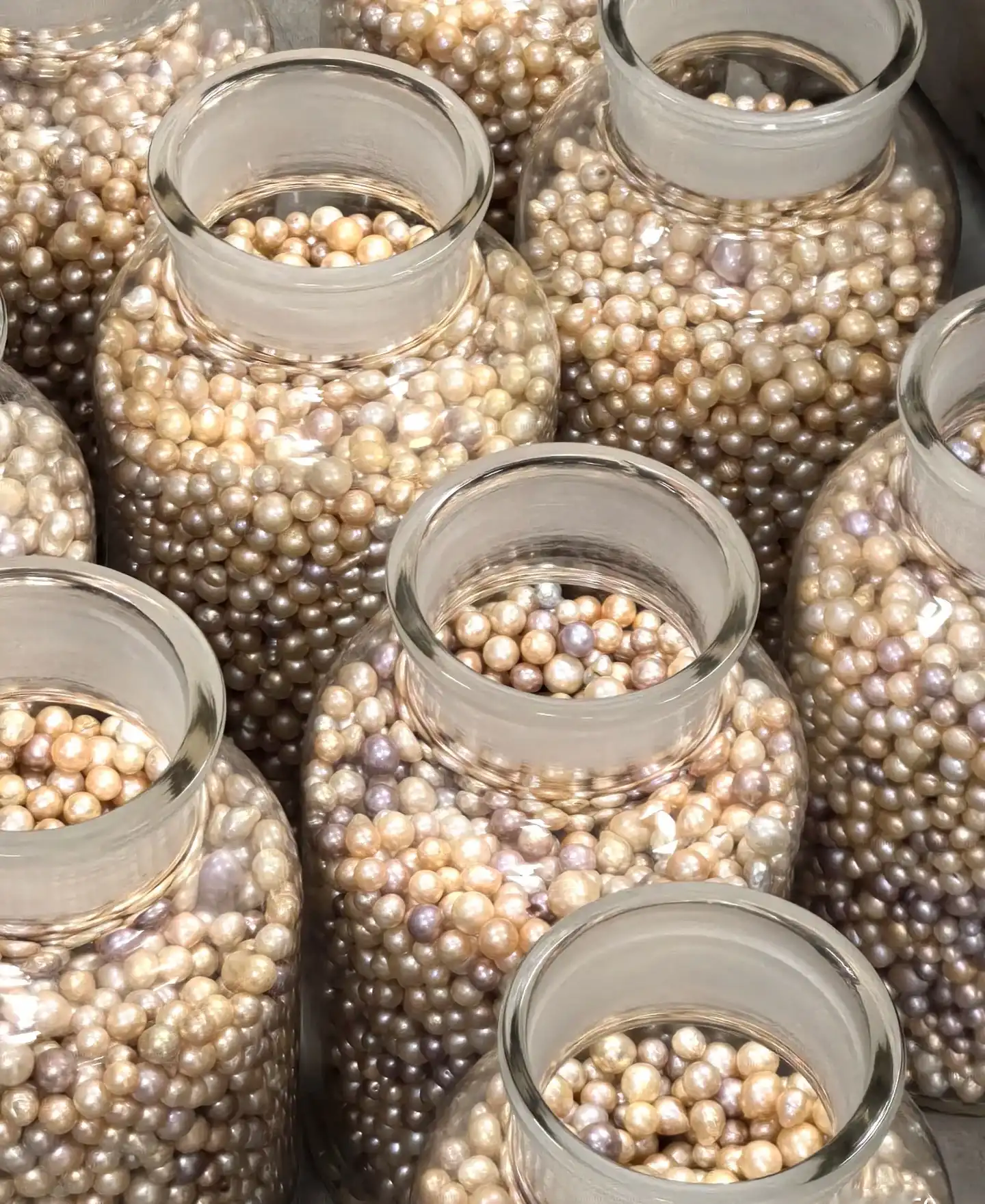
Come check out the Pearl Town with me in this video
My mission is to leverage this supply chain advantage to bring high-quality, beautiful pearls to fellow pearl lovers worldwide—at a fair price.

